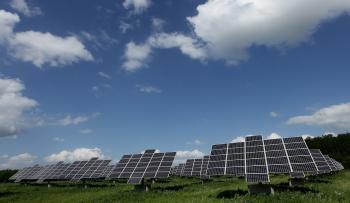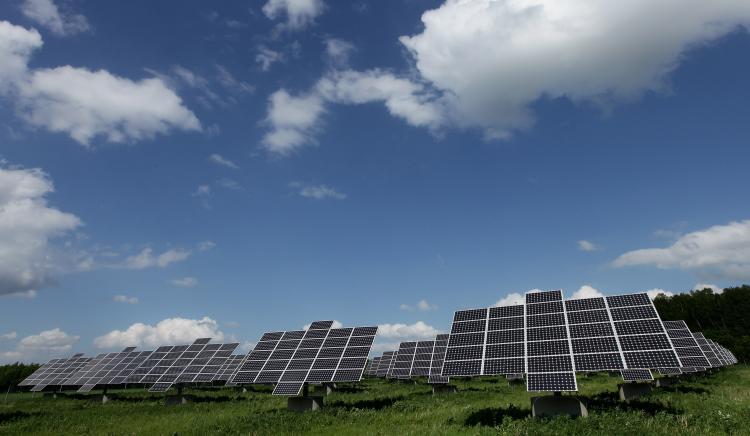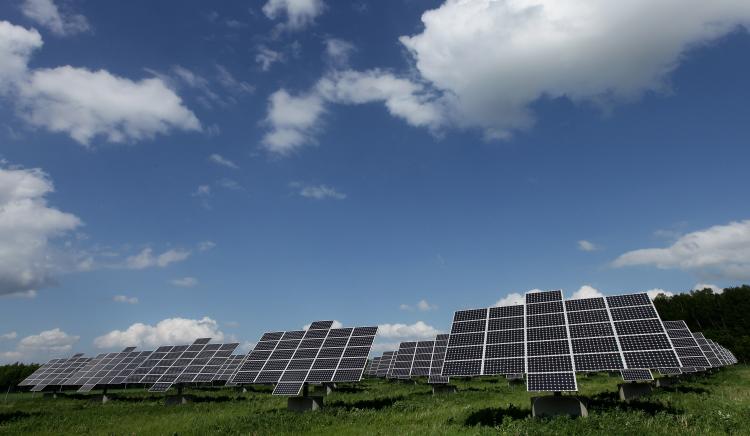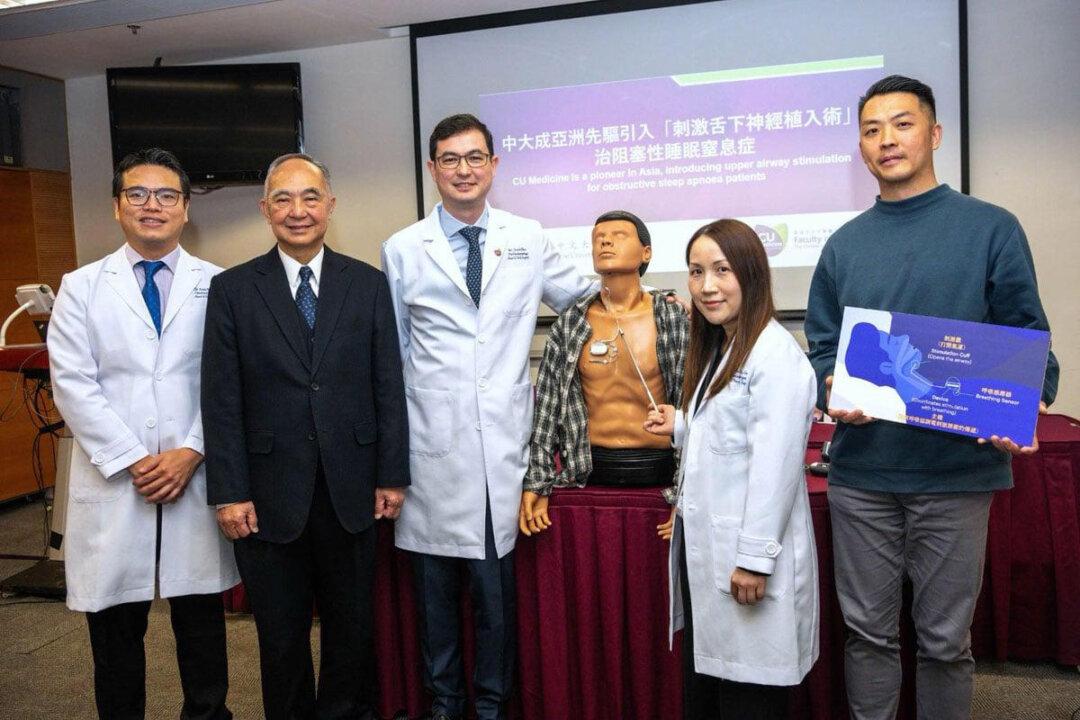Engineers at Stanford University have discovered a way to effectively use solar energy so that efficiency is almost triple the current rate.
The new technology known as photon enhanced thermionic emission, or PETE, is a combination of traditional solar power generators that convert light or heat into energy, according to a report from Stanford University.
Researchers found that by coating a piece of semiconducting material with a thin layer of the metal cesium, the material could generate electricity using both light and heat.
Unlike the usual technologies used in solar panels that become less efficient with more heat, the process can convert heat from the sun into energy while it absorbs light at the same time, surpassing all current photovoltaic and thermal conversion technologies.
“This is really a conceptual breakthrough, a new energy conversion process, not just a new material or a slightly different tweak,” said Nick Melosh, an assistant professor of materials science and engineering, who led the research group. “It is actually something fundamentally different about how you can harvest energy.”
Due to its ability to convert both light and heat, the system can have an maximum efficiency of 50 to 60 percent and functions best at high temperatures over 200 degrees Celsius.
“The light would come in and hit our PETE device first, where we would take advantage of both the incident light and the heat that it produces, and then we would dump the waste heat to their existing thermal conversion systems,” Melosh said. “So the PETE process has two really big benefits in energy production over normal technology.”
Developers hope to make the device compatible with existing systems so that conversion can be less expensive.
The PETE system is also expected to lower production costs when it is used in solar concentrators. Only a small amount of material will be needed in each device rather requiring large solar panels of silicon.
High material cost has always been an obstacle in the solar industry, but with the invention of the PETE device, solar power could become more feasible.
“The PETE process could really give the feasibility of solar power a big boost,” Melosh said. “Even if we don’t achieve perfect efficiency, let’s say we give a 10 percent boost to the efficiency of solar conversion, going from 20 percent efficiency to 30 percent, that is still a 50 percent increase overall.”
With the boost in efficiency, solar power is expected to be equally as efficient as oil, researchers say.
The new technology known as photon enhanced thermionic emission, or PETE, is a combination of traditional solar power generators that convert light or heat into energy, according to a report from Stanford University.
Researchers found that by coating a piece of semiconducting material with a thin layer of the metal cesium, the material could generate electricity using both light and heat.
Unlike the usual technologies used in solar panels that become less efficient with more heat, the process can convert heat from the sun into energy while it absorbs light at the same time, surpassing all current photovoltaic and thermal conversion technologies.
“This is really a conceptual breakthrough, a new energy conversion process, not just a new material or a slightly different tweak,” said Nick Melosh, an assistant professor of materials science and engineering, who led the research group. “It is actually something fundamentally different about how you can harvest energy.”
Due to its ability to convert both light and heat, the system can have an maximum efficiency of 50 to 60 percent and functions best at high temperatures over 200 degrees Celsius.
“The light would come in and hit our PETE device first, where we would take advantage of both the incident light and the heat that it produces, and then we would dump the waste heat to their existing thermal conversion systems,” Melosh said. “So the PETE process has two really big benefits in energy production over normal technology.”
Developers hope to make the device compatible with existing systems so that conversion can be less expensive.
The PETE system is also expected to lower production costs when it is used in solar concentrators. Only a small amount of material will be needed in each device rather requiring large solar panels of silicon.
High material cost has always been an obstacle in the solar industry, but with the invention of the PETE device, solar power could become more feasible.
“The PETE process could really give the feasibility of solar power a big boost,” Melosh said. “Even if we don’t achieve perfect efficiency, let’s say we give a 10 percent boost to the efficiency of solar conversion, going from 20 percent efficiency to 30 percent, that is still a 50 percent increase overall.”
With the boost in efficiency, solar power is expected to be equally as efficient as oil, researchers say.







Friends Read Free